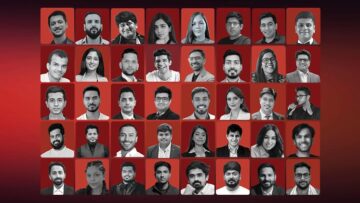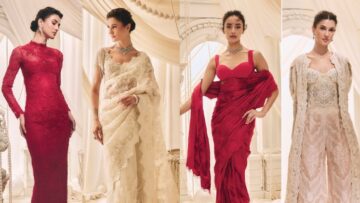
Just a month ago, Sahib Singh, a four-year-old boy’s image went viral on social media as he became Burberry children’s first Sikh model. And people across the globe, from the fashion industry to life coaches, connected it with the concept of ‘inclusion’, highlighting that it’s high time to rise above the stereotypes of colour, caste, gender and religion and be one and inclusive.
Recently, Victoria’s Secret decided to introduce its first model with Down Syndrome. This shows that the importance of diversity and inclusion is increasing for retailers. There are many more similar examples. Diversity and inclusion policies and programmes are not new to the workplace but now this is a growing trend across the globe and fashion industry too. Indeed, it is now a big focus for various international brands and retailers as they are not just money-making organisations but also responsible ‘Corporate Citizens’ too.
Far from being interchangeable, diversity and inclusion are two inter-connected concepts. Diversity is about the representation or the make-up of an entity. Inclusion is about how well the contributions, presence and perspectives of different groups of people are valued and integrated into an environment.
A diverse and inclusive workplace makes everyone, regardless of who they are or what they do for the organisation, feel equally involved in and supported in all areas of the workplace. The ‘all areas’ part is significant.
Alecia Winfield is a shareholder in the Los Angeles office of Littler (the world’s leading employment and labour law practice) representing management. She says diversity is often confused with affirmative action, which it is not. Diversity works to change the culture within the organisation to make it more inclusive for workers of all racial or ethnic backgrounds, religions, marital status, economic status and other categories. She believes that ‘Black Lives Matter’ protests that followed the murder of George Floyd by police officers have fuelled a drive for change in corporate America similar to that of the MeToo movement following the Harvey Weinstein sexual abuse allegations.
And it reflects in the fashion companies’ initiatives too. From the last 3-4 years, America’s leading apparel company VF Corporation is releasing its Inclusion, Diversity, Equity and Action (IDEA) annual report. By 2030, the company targets to achieve gender parity at the director level and above globally, and 25 per cent Black, Indigenous and People of Colour (BIPOC) representation in the US at the director level and above.
Apart from increasing efforts on this front for their own organisations, companies are investing a good amount in various activities for society. PVH Corporation’s PVH Foundation has announced new investments totalling US $10 million over the next four years in global non-profit organisations, to support their unique programming and initiatives aligned with the company’s inclusion and diversity priorities. More than 12 organisations/NGOs are partners in this initiative.
Stefan Larsson, CEO of the company, said, “With driving fashion forward for good at the core of everything we do, our new partnerships will help PVH make a greater global impact in our communities. As a company, we are committed to making a difference with inclusion and diversity, and we look forward to elevating the next generation of innovators around the world.”
Many other top fashion and retail companies H&M Group, Target and The Children’s Place etc., are working in this direction.
Why it is the need of the hour?
Diverse businesses are better places to work and deliver better decisions, have a more positive profile in society and earn greater respect from the customers. And all this results in greater financial returns.
Various research shows that gender diversity benefits a manufacturing organisation through improved ability to innovate, higher return on equity and increased profitability.
Matt Bush, Senior Strategic Advisor, Great Place to Work said that diversity and inclusion in the workplace is highly important as it pushes for greater readiness to innovate, increased ability to recruit a diverse talent pool and assures 5.4 times higher employee retention.
When employees trust that they and their colleagues will be treated fairly regardless of race, gender, sexual orientation or age, they are 9.8 times more likely to look forward to going to work and 6.3 times more likely to have pride in their work.
Covering supply chain
Many brands and retailers that are sourcing from India are pushing their supply chain partners also in this direction, for example, Levi’s has thrust on promoting gender equality in the supply chain. The denim giant’s worker well-being initiative supports supply chain workers’ financial empowerment, health and family well-being and equality.
Furthermore, it requires suppliers to undertake a worker needs’ assessment that covers topics such as hygiene and sanitation, sexual and reproductive health and economic empowerment.
Just a year ago, VF Corp. also announced to establish a supplier diversity programme to double its spend with minority- and women-owned businesses by 2025 through enterprise direct and indirect procurement, and the activities of its brands.
Indian scenario and industry’s efforts
Rather than looking at this issue as a whole, the majority of Indian companies are focusing on gender equality and even here also, industry requires a lot of improvement. Indian factories need to work on gender equality right from shopfloor to boardroom as both the segments are generally men dominated. There are a few exceptions, but the overall scenario strongly needs to change.
There are a few good steps like the one initiated by the Gurugram-based apparel manufacturer Anish India Exports (AIE), which has partnered with sustainable finishing technology company Jeanologia and set up the first-of-its-kind zero-waste garment finishing plant – AIE Laundry 5.Zero.
“Our goal is that diversity in leadership is not only healthy for business but also that women can show their full creative potential and so they should be empowered throughout the company,” said Ishita Tandon, Chief Sustainability Officer, AIE.
Few apparel manufacturers also have a production line of only female workers, which is completely managed by women.
There are some positive developments happening even on retail fronts as the Indian retail sector, including apparel retail, is also moving in this direction. Aditya Birla Fashion and Retail Ltd. (ABFRL) was the only Indian company in the list of World Benchmarking Alliance (WBA)’s report that assessed the gender impacts of the world’s 36 most influential apparel companies, explaining how these companies are integrating gender strategy across their entire value chains and addressing women’s needs.
Ritu Kumar, India’s leading designer-wear brand, is continuing with its ‘Equally Beautiful’ campaign. Photographed by Bikramjit Bose, the campaign, started three years back, featuring a photo essay on women from the four distinct regions of India who carry with themselves unapologetic beauty and pay homage to their cultural diversities.
Recently Trust for Retailers & Retail Associates of India (TRRAIN), a public charitable trust, and Retailers Association of India (RAI), the unified voice of Indian retailers, decided to work together to implement diversity, equity and Inclusion policies with retailers registered with the RAI.
An agreement was signed in this regard with pledges and support of CEOs and CHROs from retailers including Vishal Mega Mart and Reliance Retail; the partnership aims to make a difference in the industry by fostering diversity and inclusion and making retail a more attractive employer to all factions of the society.
“Diversity and Inclusion have become important conversations today. As thought leaders and catalysts, we want to enable retail organisations in their diversity and inclusion journey, particularly about employing Persons with Disabilities (PwD),” said BS Nagesh, Founder, TRRAIN.
Areas to focus upon
As the apparel export industry is completely buyer-driven, Indian apparel exporters will for sure follow whatever direction, initiatives the buyers will ask for diversity and inclusion but the need is to be proactive and take a lead so that companies can get benefit for being diverse and inclusive.
Invisible gender data is a challenge in this direction not only for the apparel manufacturing industry but also for the retail segment. At the same time, there is a need to change the mindset at all levels so that diversity and inclusion can become a part of organisation culture not just a forceful step.






